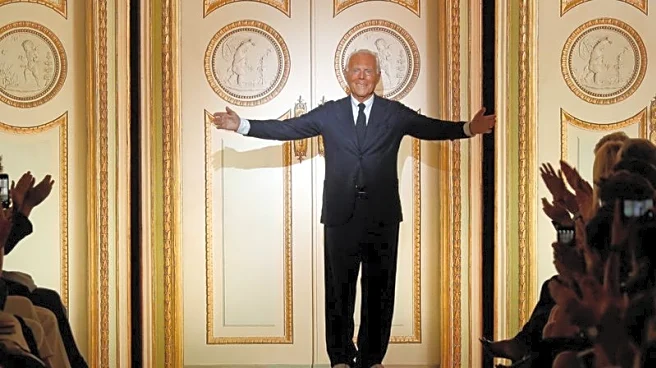What's Happening?
Giorgio Armani, renowned fashion designer, passed away at age 91, leaving behind a legacy that extends beyond fashion into the realms of interior design and hospitality. Armani's first home collection debuted 25 years ago, featuring streamlined designs and neutral palettes, which became a hallmark of his lifestyle vision. His influence expanded globally, notably with the opening of the Armani Hotel in Dubai's Burj Khalifa and the Armani Hotel Milan. Armani's participation in Milan Design Week and the establishment of his interior design studio contributed to Milan's reputation as a design capital. His work in the hospitality sector, including restaurants and hotels, showcased his design philosophy and established his brand's presence worldwide.
Why It's Important?
Armani's contributions to design and hospitality have had a lasting impact on the industry, blending fashion with interior design and setting new standards for luxury living spaces. His approach to design emphasized elegance, restraint, and authenticity, influencing both fashion and interior design communities. Armani's legacy continues to inspire designers and architects, highlighting the importance of integrating style and functionality in living spaces. His work has also played a role in elevating Milan's status as a design hub, attracting international attention and fostering collaborations across industries. The recognition of Armani's achievements underscores the interconnectedness of fashion, design, and hospitality, and the potential for cross-industry innovation.
Beyond the Headlines
Armani's legacy prompts reflection on the role of design in shaping cultural and urban landscapes. His ability to merge fashion with interior design has paved the way for other designers to explore multidisciplinary approaches, potentially leading to new creative expressions. The emphasis on timeless elegance and quality in Armani's work serves as a reminder of the enduring value of craftsmanship and thoughtful design. As the design community honors Armani, there may be renewed interest in exploring the ethical and cultural dimensions of design, considering how aesthetics can influence societal values and lifestyles.













